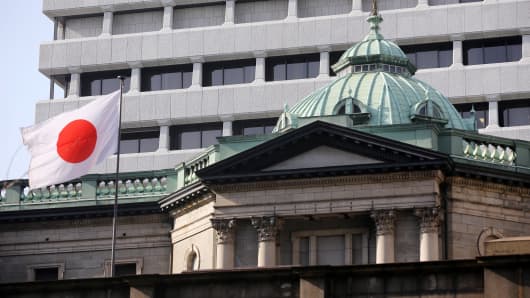When Japan's new team of central bankers took over in March 2013, domestic consumer prices and industrial production were falling at annual rates of 0.9 percent and 6.7 percent respectively. Average economic growth in the fourth quarter of 2012 and in the first quarter of 2013 was an alarming 0.1 percent.
The newly-elected prime minister wanted quick action, and the money managers he brought in thought that they could deliver with an avalanche of fresh liquidity.
That looked like a good bet. Inflation and deflation being the monetary phenomena, they have to be addressed with appropriate degrees of tight or easy monetary policies.
But here is the rub. To stop and reverse price deflation, the monetary policy must create rising capacity and cost pressures in labor and product markets. Or, if you prefer, the monetary policy has to start pushing prices up by raising demand for labor, products and services to the point where price increases begin to accelerate.
How is that expected to work through an economic system?
Easy. By providing cheap credit, interest-sensitive components of aggregate demand – such as household consumption, residential investments and business capital spending – are supposed to rev up demand for labor, goods and services. So, with some time lag, because all this is not an instantaneous event, the economy and the general price level should begin to push up. At that point, the central bank killjoys are already plotting the course toward monetary restraint.
Impaired monetary multiplier
Sounds good? Yes, but what was the result of that policy in Japan three years on?







